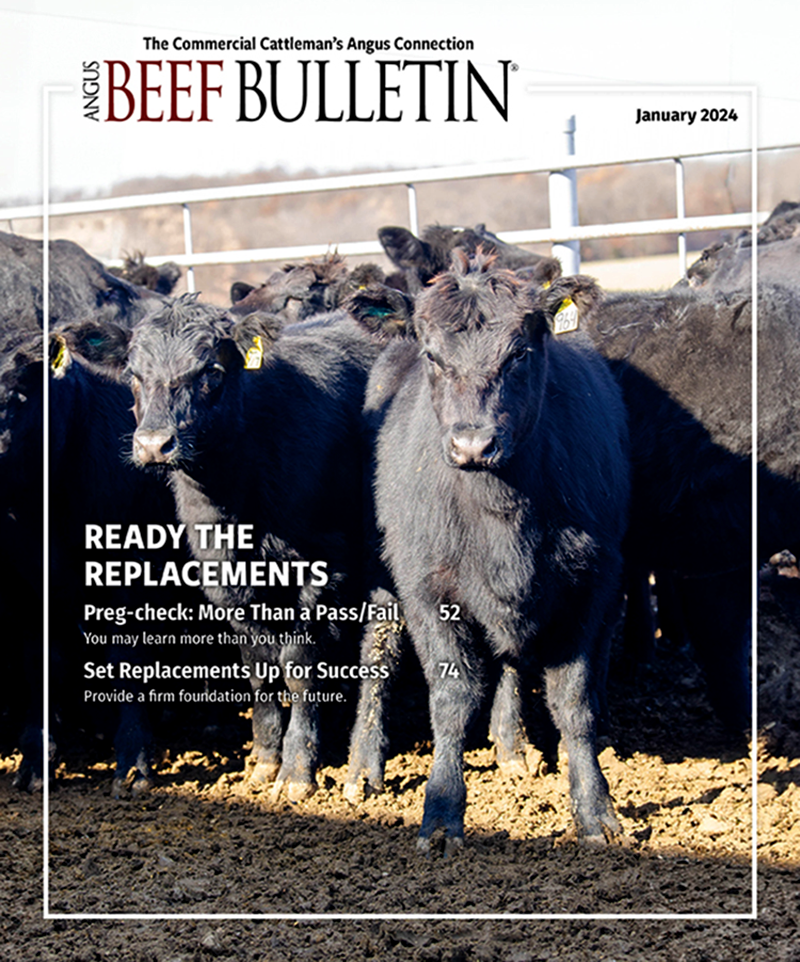
What Did Higher-profit Cow-calf Producers Do to Be More Profitable?
High-profit operations do these things differently from low-profit operations.
Cow-calf producers are always looking at ways to cut costs and improve profits. The University of Minnesota Center for Financial Management provides some insights through FINBIN. The farm financial database is built from records submitted from thousands of ag producers using FINPACK for farm business analysis. Individual producer information is protected, but the collective provides benchmarks for farm producers, educators, lenders and other ag professionals. Interested parties are invited to create their own reports.
By looking at data compiled from operations in Nebraska, South Dakota and North Dakota for the 2022 FINBIN Livestock Analysis, we can glean some ideas for improving profitability in beef operations.
The top 20% of producers in terms of profitability had a higher gross margin at $1,183.52 vs. $959.74 (see Fig. 3), for a $223.78 difference. The lowest-profit group sold more total dollars of calf per cow. The more profitable group sold some calves, but they transferred some to another enterprise, such as a stocker or feedlot program.
The high-profit group also received more government payments ($20.63 vs. $4.06 per cow) (see Fig. 1).
The high-profit group bought replacements, which probably means they didn’t save replacements. The low-profit group bought and transferred in replacements.
High-profit herds had lower cull sales than the low-profitability herds, at $80.35 per hundredweight (cwt.) vs. $143.92 per cwt. They also had a lower culling rate (5.6% vs. 13.8%) (see Fig. 1).
High-profit herds had lower total expenses, at $600.64 per cow vs. $1,045.73 per cow. The average weaning weight was 497 pounds (lb.) for low-profit herds vs. 525 lb. for high-profit herds. However, when looking at pounds weaned per cow exposed, low-profit producers produced on average 443 lb. per exposed female vs. the 489 lb. per exposed female produced by high-profit producers. The average price per cwt. was $172.19 for the low-profit herds vs. $231 for the high-profit herds. The average weight of beef calves sold was 635 lb. for the low-profit group and 525 lb. for the high-profit group (see Fig. 4).
The high-profitability group spent a total of $260.34 less on total feed (see Fig. 4). It spent more on pasture ($43.76 per cow) and less on hay (-$215.37 per cow) vs. the low-profit group. They also spent more on alfalfa, at $35.58 per cow.
While it is important to watch feed costs, you still must meet the cow’s requirements, so she will breed back. If you noticed, the high-profitability group spent less on feed; however, it was able to use feeds high in protein, such as alfalfa, to help meet the needs of the cows while reducing the cost of supplemental protein. Balancing rations, forage testing and cost-effective purchasing of feed can reduce feed costs while meeting the cows’ needs.
In conclusion, no one individual cost will help you be more profitable. It takes management of the whole system, costs and income to make a more profitable operation.
Editor’s note: Randy Saner is a livestock systems Extension educator at UNL. [Lead photo from Real Ag Stock courtesy UNL.]







